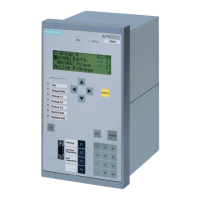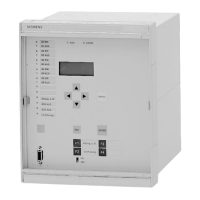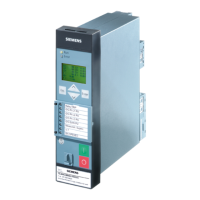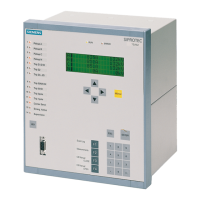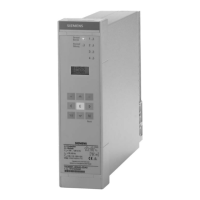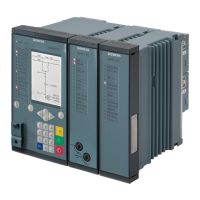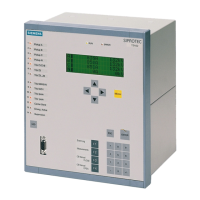Introduction
1.3 Characteristics
SIPROTEC, 7SD5, Manual
C53000-G1176-C169-5, Release date 02.2011
29
• Phase segregated tripping possible (for operation with single-pole or single-and three-pole auto-reclosure)
(order variant)
Distance Protection (optional)
• Can be used either to operate in parallel to differential protection, or as the main protection function
• Protection for all types of faults in systems with earthed, compensated or isolated starpoint
• Selectable polygonal tripping characteristic or MHO characteristic
• Possibility to choose between Z pickup, I>-, U/I- or U/I/ϕ pickup, enabling the adaptation to different system
conditions and the user philosophies
• Reliable differentiation between load and fault conditions also on long, high-load lines
• High sensitivity in the case of a lightly loaded system, extreme stability against load jumps and power swings
• Optimum adaptation to the line parameters by means of the tripping characteristic with diverse configuration
parameters and „load trapezoid“ (elimination of the possible load impedances)
• Six measuring systems for each distance zone
• Six distance zones, selectable in forward or reverse direction or non-directional, one can be graded as an
overreach zone
• Nine time stages for the distance zones
• Direction determination (with polygon) or polarization (with MHO characteristic) is done with unfaulted loop
voltages and voltage memory, thereby achieving unlimited directional sensitivity not affected by capacitive
voltage transformer transients
• Suitable for lines with serial compensation
• Insensitive to current transformer saturation
• Compensation of the influence of parallel line is possible
• Shortest command time significantly less than one cycle
• Phase-selective tripping (in conjunction with single-pole or single- and three-pole auto-reclosure) possible
• Instantaneous tripping following switching onto a fault is possible
• Two setting pairs for earth impedance compensation
Power Swing Supplement (optional)
• Power swing detection with dZ/dt measurement from three measuring systems
• Power swing detection up to 10 Hz swing frequency
• Remains in service also during single-pole dead times
• settable power swing programs
• prevention of undesired tripping by the distance protection during power swings
• Tripping for out-of-step conditions can be configured
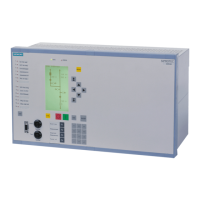
